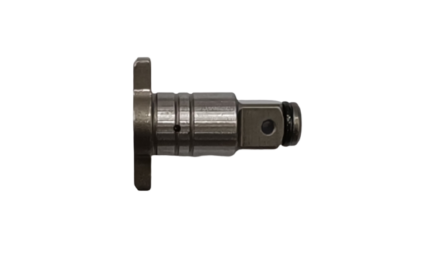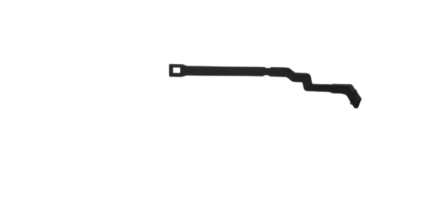The Power Conduit: Unveiling the Angle Grinder Carbon Brush Holder
Within the heart of your angle grinder lies a crucial yet often overlooked component – the carbon brush holder. This small but essential part plays a vital role in transmitting electrical current to the motor, ultimately powering the grinding wheel. Here’s a deep dive into the carbon brush holder:
Function:
-
Electrical Bridge: The carbon brush holder acts as a bridge between the stationary motor housing and the rotating motor shaft. It securely holds the carbon brushes, which make contact with the commutator (DC motors) or slip rings (AC motors) on the rotating shaft. This allows the electrical current from the motor’s brushes or windings to flow through the carbon brushes and into the motor’s rotating components.
-
Maintaining Contact: As the motor shaft spins, the carbon brush holder ensures the carbon brushes maintain consistent contact with the commutator or slip rings. This continuous contact is essential for uninterrupted current flow and proper motor operation.
Construction:
- Material: The carbon brush holder is typically crafted from a durable and heat-resistant material like insulating plastic or high-temperature nylon. This material choice ensures it can withstand the heat generated during motor operation.
- Design: The design of the carbon brush holder can vary depending on the angle grinder model. However, it generally features spring-loaded mechanisms that press the carbon brushes against the commutator or slip rings with the right amount of pressure for optimal current transfer. Some holders may also incorporate a clip or screw mechanism for securing the carbon brushes in place.
- Connection: The carbon brush holder typically mounts onto the motor housing and connects to the electrical wiring from the motor’s brushes or windings.
Maintenance:
- Inspection: Carbon brushes wear down over time due to friction with the commutator or slip rings. It’s crucial to regularly inspect the carbon brushes for wear and tear. The brush holder itself might also show signs of wear, such as cracks or loose connections.
- Replacement: When the carbon brushes reach their minimum recommended length (refer to your grinder’s manual), it’s essential to replace both the brushes and the carbon brush holder if it shows signs of damage. Worn brushes or a faulty brush holder can lead to sparking, decreased motor performance, or even complete motor failure.
Safety Considerations:
- Power Disconnect: Always ensure the angle grinder is unplugged from the power source before inspecting or replacing the carbon brushes and holder.
- Genuine Replacements: It’s recommended to use genuine replacement parts from the angle grinder manufacturer or a reputable source to ensure proper fit, performance, and safety.
In Conclusion:
The carbon brush holder may seem like a small component, but it plays a critical role in the efficient and safe operation of your angle grinder. By understanding its function, construction, and maintenance needs, you can ensure your grinder receives the power it needs to perform effectively for years to come. Remember, prioritize safety by unplugging the grinder before maintenance and use the appropriate replacement parts for optimal performance and continued safe use.












Reviews
There are no reviews yet.